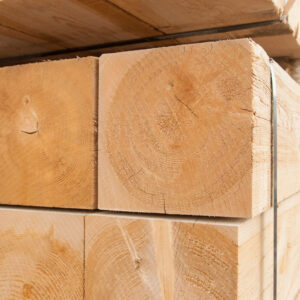Firewood is wood that is harvested and used specifically for burning as fuel to provide heat, light, and sometimes to cook food. It is one of the oldest forms of fuel, with its use dating back thousands of years, and remains a popular heating source, particularly in rural and off-grid areas. Firewood is generally harvested from trees and can be used in a variety of settings, including homes, campsites, and for industrial purposes.
Key Features of Firewood:
-
Types of Firewood:
-
Hardwood: Hardwoods are dense and typically burn hotter and longer. Common hardwoods used for firewood include oak, hickory, maple, beech, and ash. They are ideal for providing sustained heat over long periods.
-
Softwood: Softwoods burn quicker and can produce more smoke. While they don’t burn as long as hardwoods, they are often easier to split and can be used for kindling or quick fires. Examples include pine, spruce, fir, and cedar.
-
-
Moisture Content: The effectiveness of firewood largely depends on its moisture content. Wet or “green” wood has too much moisture and does not burn efficiently. It produces more smoke and less heat. Seasoned wood, which has been dried for about 6-12 months, is ideal because it has a lower moisture content, burns more efficiently, and creates less smoke.
-
Size and Shape: Firewood is typically cut into logs of varying lengths. The standard lengths for firewood logs are typically 16 inches (41 cm) or 18 inches (46 cm) to fit most stoves and fireplaces, although different sizes may be cut for specific purposes. Split firewood has a rougher surface area, allowing it to dry faster and burn more efficiently.
-
Storage: Proper storage is key to ensuring firewood burns well. Wood should be stacked in a way that allows air to circulate around it to promote drying. It should be kept off the ground, ideally in a shed or covered area, to keep it dry and protected from rain and snow.
-
Energy Content: Different woods have different energy contents. Hardwoods generally have a higher energy content per unit of volume than softwoods. For example, oak typically has a higher heat output than pine, making it more suitable for long, sustained heating.
-
Environmental Considerations:
-
Sustainability: Harvesting firewood can have environmental impacts if it is not done sustainably. It is important to source firewood from responsibly managed forests to avoid deforestation. In some cases, using wood that has fallen naturally (deadwood) or is sustainably harvested from local forests can minimize the impact.
-
Carbon Emissions: Burning firewood releases carbon dioxide (CO₂) into the atmosphere. While wood is considered “carbon-neutral” because the carbon released is part of the natural carbon cycle, it still contributes to emissions. The key to minimizing the environmental impact is to burn wood efficiently and use seasoned firewood to reduce emissions.
-
Benefits of Using Firewood:
-
Cost-Effective: In many areas, firewood is relatively inexpensive, especially if you can cut and season it yourself. It can be a great way to heat your home or cook food without relying on electricity or gas.
-
Renewable Resource: Unlike fossil fuels, wood is a renewable resource, provided forests are managed sustainably. In many areas, firewood can be replenished through proper replanting and forest management practices.
-
Heat and Ambiance: Firewood offers excellent heat output and creates a cozy, natural ambiance. Many people prefer the warmth and feel of a wood stove or fireplace over other forms of heating.
-
Self-Sufficiency: Using firewood allows for a degree of self-sufficiency. In rural or off-grid areas, firewood can provide a reliable source of heat and cooking fuel, independent of external energy suppliers.
Disadvantages of Firewood:
-
Labor-Intensive: Gathering, chopping, splitting, and seasoning firewood can be physically demanding and time-consuming. It requires regular effort to maintain a steady supply.
-
Air Pollution: Burning firewood, especially when it is not properly seasoned, produces particulate matter and other pollutants, which can be harmful to air quality. It’s important to use efficient stoves and burn wood properly to minimize this effect.
-
Storage Space: Firewood requires significant space for storage, especially if you need to stockpile it for the winter months. Keeping it dry and protected from the elements adds to the need for proper storage solutions.
-
Pest Risk: Storing firewood can attract pests like termites or beetles, especially if the wood is not properly treated or stored. It’s best to avoid storing firewood near the house to prevent these pests from migrating.










Reviews
There are no reviews yet.